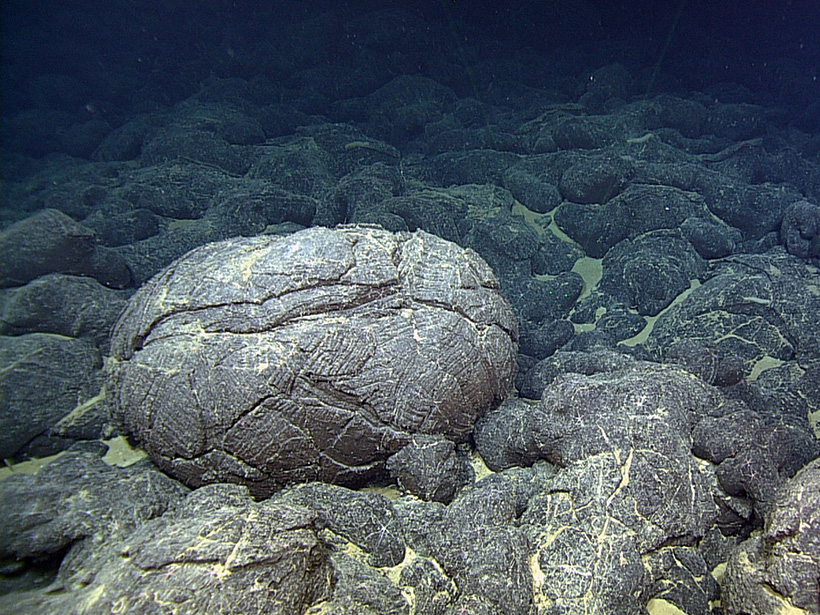Source: Journal of Geophysical Research: Solid Earth
Off the coast of the U.S. Pacific Northwest, at the Juan de Fuca Ridge, two tectonic plates are spreading apart at a speed of 56 kilometers per 1 million years. As they spread, periodic eruptions of molten rock give rise to new oceanic crust. Seismic images captured by Carbotte et al. now provide new insights into the dynamics of magma chambers that feed these eruptions.
The new research builds on earlier investigations into magma chambers that underlie the Juan de Fuca Ridge as well as other sites of seafloor spreading. Sites of fast and intermediate spreading are typically fed by a thin, narrow reservoir of molten magma—the axial melt lens—that extends along the ridge at an intermediate depth in the oceanic crust, but still well above the mantle.
Recent evidence suggests that some seafloor spreading sites around the world contain additional magma chambers beneath the axial melt lens. These additional chambers are stacked one above another in the “crystal mush zone,” an area of the actively forming oceanic crust that contains a low ratio of melted rock to crystallized rock.
Beneath the Axial Seamount portion of the Juan de Fuca Ridge (the site of an on-axis hot spot, which is a different tectonic setting compared with the rest of the ridge), a 2020 investigation showed evidence of stacked magma chambers in the crystal mush zone beneath the large magma reservoir that underlies this on-axis hot spot. Carbotte et al. applied multichannel seismic imaging data collected aboard the R/V Maurice Ewing and found geophysical evidence for these stacked chambers along normal portions of the ridge not influenced by the hot spot.
The new imaging data reveal several stacked magma chambers in the crystal mush zone at each of the surveyed sites. These chambers extend along the length of the ridge for about 1–8 kilometers, and the shallowest chambers lie about 100–1,200 meters below the axial melt lens.
These findings, combined with other geological and geophysical observations, suggest that these stacked chambers are short-lived and may arise during periods when the crystal mush zone undergoes compaction and magma is replenished from the mantle below. The chambers do not cool and crystallize in place, but instead are tapped and contribute magma to eruptions and other crust-building processes.
Further research could help confirm and clarify the role played by these stacked chambers in the dynamics of seafloor spreading. (Journal of Geophysical Research: Solid Earth, https://doi.org/10.1029/2020JB021434, 2021)
—Sarah Stanley, Science Writer
Citation:
Stanley, S. (2021), Magma pockets lie stacked beneath Juan de Fuca Ridge, Eos, 102, https://doi.org/10.1029/2021EO159600. Published on 14 June 2021.
Text © 2021. AGU. CC BY-NC-ND 3.0
Except where otherwise noted, images are subject to copyright. Any reuse without express permission from the copyright owner is prohibited.

